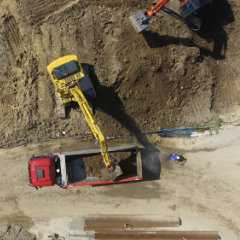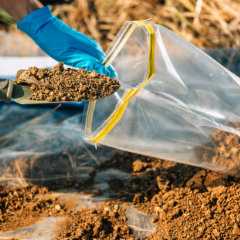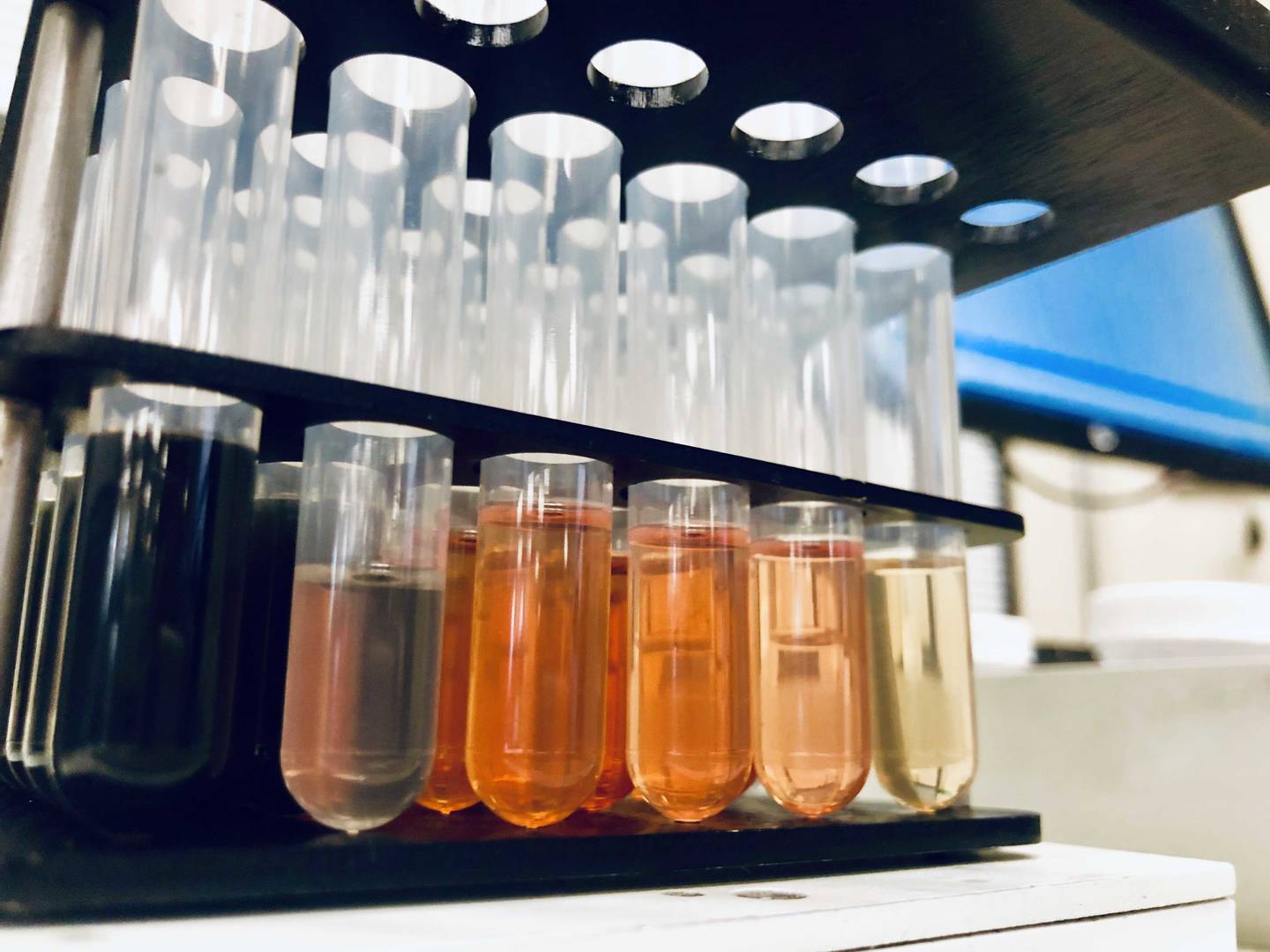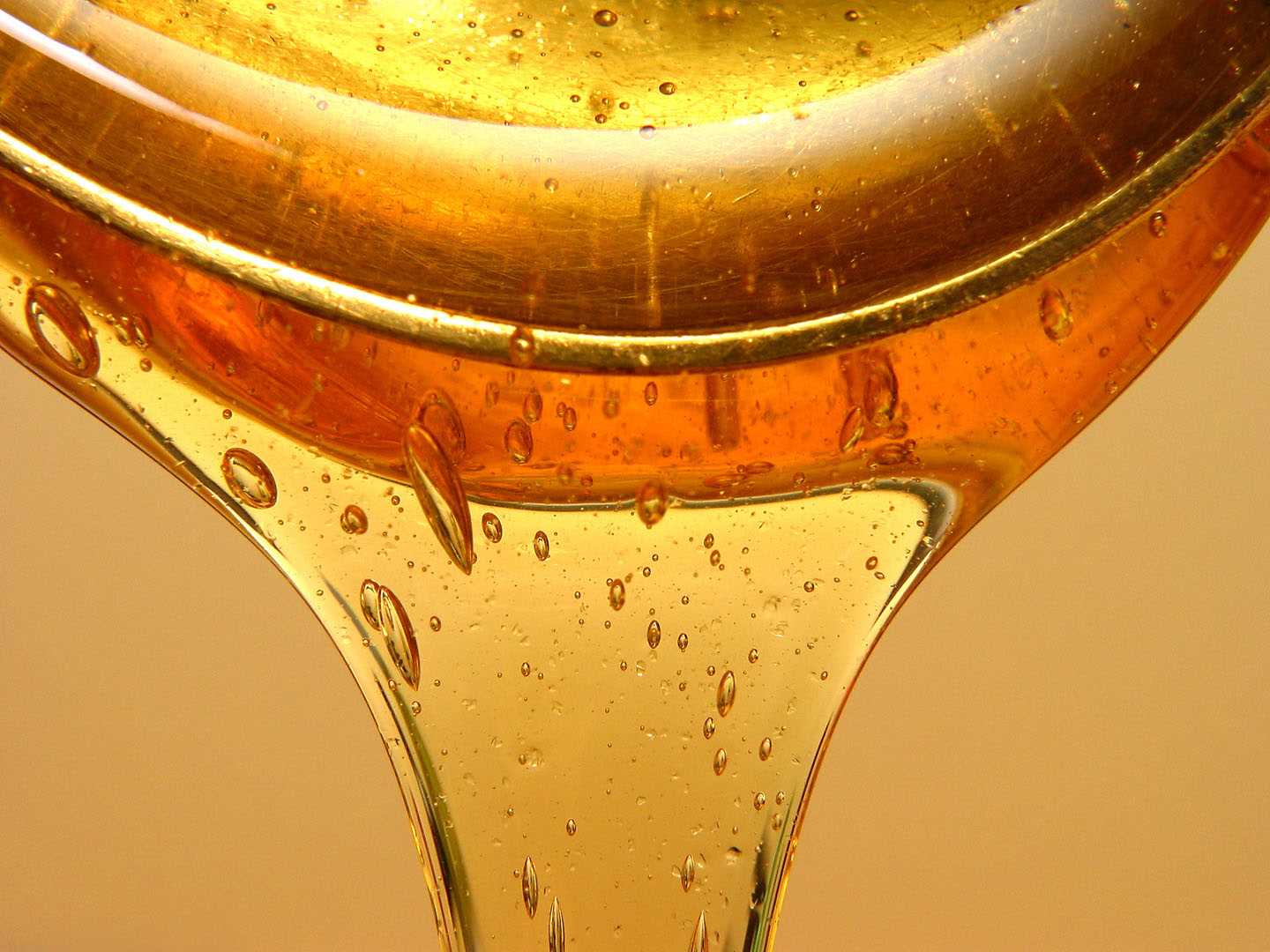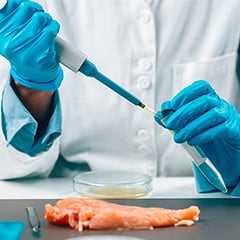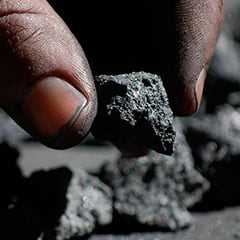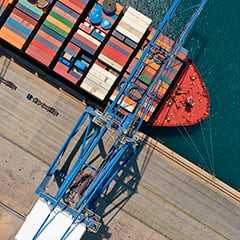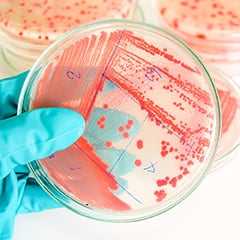EnviroMail 26 Canada - A New Benchmark Method for Trace Level Organochlorine Pesticides in Sediments & Soils

Background
Although restrictions against their use have been in place for decades in most industrialized nations, OCPs are highly persistent, and remain prevalent in the sediments of harbours and waterways near cities or sources of agricultural runoff. These compounds are hydrophobic, strongly associated with carbon and fine sediment, and bioaccumulative. Their deleterious effects occur primarily through ecotoxicological impacts, even at trace levels.
Comparing environmental concentrations of these contaminants to applicable guidelines and ecological criteria is important for the protection of sediment dwelling (benthic) organisms and to prevent bioaccumulation and biomagnification to higher trophic levels of the food chain. Canadian and US sediment guidelines for OCPs are very low, often in the low parts-per-trillion range. Measurement of OCPs at such low levels in soils or sediments poses significant challenges, particularly due to the potential for co-extracted interferences.
GC-MS/MS: The New Benchmark for OCP Testing
Until recently, the most reliable method to measure OCPs in soils and sediments at such challenging regulatory levels utilized gas chromatography with high resolution mass spectrometry (GC-HRMS), based on US EPA Method 1699, as offered by ALS Canada through our Burlington laboratory. The GC-HRMS method is extremely valuable to achieve the lowest possible reporting limits (more than 10x below the lowest guidelines) with exceptional selectivity, but it is a complex and labour-intensive test.
Following innovative method development and extensive validation, ALS Canada (Waterloo laboratory) now offers a new option for a highly selective, accurate, and precise method using gas chromatography with tandem mass spectrometry (GC-MS/MS) to achieve trace level OCP detection limits in soils and sediments with near-zero potential for interferences. This new GC-MS/MS method meets most soil and sediment standards across Canada and the USA.
While not achieving as low detection limits as GC-HRMS, the new procedure is more efficient, with a comparable degree of confidence and certainty. This provides environmental practitioners with the opportunity to test more samples to better delineate soil or sediment contaminant hotspots, potentially allowing for a reduction in quantities and costs for treatment or disposal. The delivery of faster results is a further benefit to clients managing major projects.

Port dredging: commercially important, but risks must be managed.
Classical OCP Test Methods
The Selectivity of MS/MS
The use of MS/MS detection greatly reduces the possibility of false positives or false negatives, especially for trace analysis. This is clearly shown in Figure 1 below with a comparison of mass chromatograms for methoxychlor spiked at 10 µg/kg in a soil sample and analyzed by routine GC-MS and by the new GC-MS/MS method.
With the classical GC-MS method, co-extracted organic components present large interference peaks and background that creates uncertainty regarding the presence and concentration of methoxychlor. What could have been disregarded as background by classical GC-MS is clearly and unambiguously identified as methoxychlor by GC-MS/MS. The MS/MS detector provides highly selective and definitive measurements because it detects only those substances that generate a unique fragment ion (daughter ion) that originated from a specific parent ion. The measurement of “mass transitions” gives a second dimension of selectivity versus classical GC-MS, where only the parent ion is quantified.


Dredged sediments may transfer legacy contaminants to terrestrial sites.
Data Quality of GC-MS/MS Method
Together with its vastly improved selectivity and sensitivity versus classical methods, the precision and accuracy of the Trace GC-MS/MS method sets a new benchmark for data quality, as illustrated by method validation results shown in Table 1.
The benefits of the GC-MS/MS method for OCP testing are substantial: significantly improved accuracy and precision, with much lower detection limits, and greatly improved confidence due to near-elimination of interferences and background.
The new method is currently accredited to the ISO 17025 quality standard for 29 OCP analytes; please refer to ALS Waterloo’s current CALA Scope of Accreditation for details. Initial blind Proficiency Test results for the method were excellent, averaging 92% of reference values for OCPs in four soil samples. Independent 3rd party verification of performance gives additional confidence for the use of the GC-MS/MS method for new or ongoing projects where data quality assurance is crucial.
Table 1: GC-MS/MS Method Precision & Accuracy

Applications
- CCME Sediment Quality Guidelines for the Protection of Aquatic Life, Freshwater and Marine Interim Sediment Quality Guidelines (ISQGs) and Probable Effect Levels (PELs), 1998.
- BC Contaminated Sites Regulation, Schedule 3.1 Soil Standards and Schedule 3.4 Sediment Standards, 2019.
- Alberta Tier 1 Soil and Groundwater Remediation Guidelines, 2019.
- Saskatchewan Environmental Quality Guidelines, 2015.
- Ontario Reg. 153/04 Table 1, Full Depth Background Site Condition Standards, Sediment, 2011.
- Ontario Provincial Sediment Quality Guidelines (PSQG) for Confined and Unconfined Fills, 2011.
- Sediment Evaluation Framework for the Pacific Northwest, Proposed Screening Levels (Freshwater Benthic, Marine Benthic, and Water Quality), 2018.
- US EPA Regional Implementation Manual for the Evaluation of Dredged Material Proposed for Disposal in New England Waters (2004).
Guidelines and standards in the USA vary by state, region, and disposal type, but the Limits of Reporting (LORs) for ALS Waterloo’s Trace GC-MS/MS method will meet all but the lowest and most challenging limits. Table 2 compares our Trace GC-MS/MS and Ultra-Trace GC-HRMS LORs to the Guidelines and Regulations mentioned above. ALS Burlington’s EPA 1699 GC-HRMS method is recommended where the absolute lowest possible detection limits are required; reporting limits for this method vary by sample as per EPA 1699 guidance (MDLs are shown in Table 2).
Sampling and Contact Information
Table 2: ALS OCP Reporting Limits Compared to Regulations/Guidelines
Please contact your ALS Account Manager or ALSWTInfo@alsglobal.com for more information about the new Trace GC-MS/MS sediment/soil Method.

